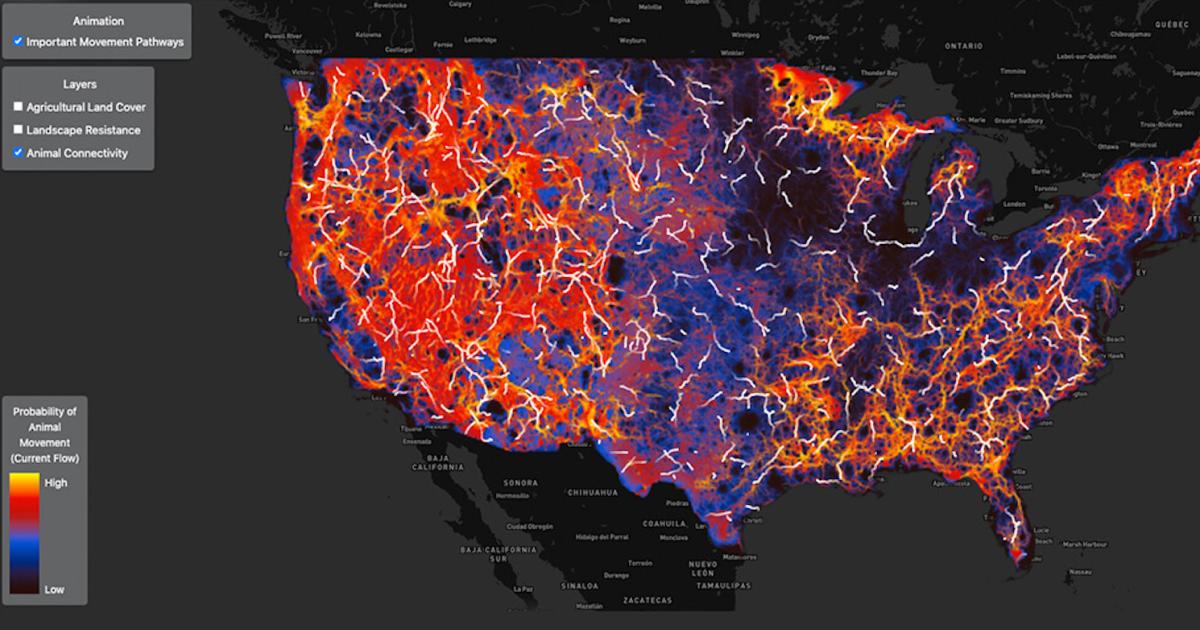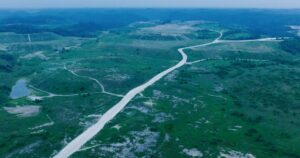
General Mills, Microsoft and Pacific Gas & Electric are among the businesses building nature-protection efforts into their sustainability strategies. Their products and services could hardly be more different, yet their intentions for guarding biodiversity have something in common: prioritizing the knowledge of people on the ground, including farmers and Indigenous communities.
“As a food company, if we can’t get the outputs of Mother Nature, like oats and wheat and dairy, we cannot operate our business,” said General Mills’ Chief Sustainability & Global Impact Officer Mary Jane Melendez on Tuesday at GreenBiz’s Bloom 23 event in San Jose, California. “We’re not going to be able to hit any business objectives.”
The company committed in 2019 to advance regenerative practices on 1 million acres of farmland by 2030 after determining it can make an outsize difference in agriculture, shrinking its carbon footprint and pushing climate solutions, she said.
Farming for the ground
General Mills, which does not own farms, is already sourcing key ingredients from 1 million acres of regeneratively farmed land in partnership with farmers. Melendez described the company’s regenerative approach to farming and ranching as principles-based, outcome-focused and varied by region and crop.
“We do not have all of the answers; we’re being educated by farmers and by individuals who have been doing this on their landscape for a very, very long time,” she said. That regeneratively farmed land has more earthworms and soil aggregates, as well as lower temperatures, than conventional samples several feet away, she added.
We’re being educated by farmers and by individuals who have been doing this on their landscape for a very, very long time.
“Rather than learning within our corporate headquarters … behind a PowerPoint or in a conference room, we’ve actually been taking our stakeholders and our employees out to regenerative farms to be able to understand the power of nature,” Melendez said.
Bonnie Lei described Microsoft having a similar bottom-up approach, deriving sustainability strengths not from the top leadership but from its more than 200,000 employees. She finished six years at the tech giant in September, most recently as its head of environmental justice, employee engagement and ecosystems — the latter being one of Microsoft’s four primary sustainability focuses, in addition to carbon, water and waste.
”For anyone who works in the conservation space, you understand really intimately and clearly, that nature, and the intact ecosystems really [are] the foundation for everything on our planet,” said the former conservation biologist. “And so you cannot talk about a sustainability strategy without thinking about, what are we doing … at least to protect nature.”
Harvesting data from the ground
Microsoft has pledged to protect more land than it uses by 2025. In addition, it is harnessing troves of data and computing muscle to contribute positively to ecosystems, according to Lei. That was the goal behind its $50 million AI for Earth program, for which she led strategic partnerships.
“If we’re talking about how do we tap into the knowledge of experts … working directly in different locations around the world, you’re able to tap into that on-the-ground experience as well,” Lei said. “That’s not something that you could get sitting in an office far away.”
How can we get the data, the geospatial, remote sensing, planetary scale data, of our planet and of our world, into the hands of all scientists?
In 2020, the Redmond, Washington, company evolved AI for Earth into its Planetary Computer, which offers petabytes of environmental data to researchers.
“How can we get the data, the geospatial, remote sensing, planetary scale data, of our planet and of our world, into the hands of all scientists, and all those who are working on the frontlines of being able to better understand the ecosystems they’re working in?” said Lei, who this month became RMI’s principal of climate intelligence.
At RMI, Lei ponders how market-based systems can better care for nature and people. One idea is to integrate equity and justice criteria and scoring into carbon credits. “And how can we make sure that the benefits are being distributed to the communities that are on the ground and have been the ones … stewarding these natural resources for millennia?”
Listening to Indigenous communities
“The best-laid plan is a plan that includes an indigenous perspective,” said PG&E Tribal Liaison Reno Franklin. For Pacific Gas & Electric, managing natural resources around its power plants and transmission lines requires prioritizing members of Indigenous communities. The investor-owned utility serves 101 tribes and 58 reservations.
Patti Poppe, who came to PG&E in 2021, is the company’s first CEO to visit Native reservations. Her meetings with tribal members and government leaders offered an olive branch and set the stage for corporate-community partnerships, said Franklin, who has worked for the utility since 2018. It’s part of the company’s intentions to respect sacred sites and natural botanical areas that make up biodiversity for tribes, said Franklin, who is also chairman of the Kashia Band of Pomo Indians.
As we’re clearing lines and vegetation around lines, the concept of ‘light hand on the land’ is something super important.
“We took that extra step of talking to tribal governments and making sure that we were designing out of their cemetery, out of their sacred sites and their natural botanical gathering areas, and all of these areas that make up biodiversity for tribes,” he said. “And we’re asking, What does resilience look like to you? How are our services … affecting the ways in which you gather basket materials, affecting the ways in which you do traditional burns? How are we providing services that don’t interrupt your ceremonial time? And then how can we be a better community member to you?”
PG&E continues to face fallout from the devastating California wildfires that state officials say its equipment caused. In 2022, the utility agreed to pay $55 million to victims of the 2021 Dixie Fire and the 2019 Kincade Fire, but it did not admit fault.
When it comes to recovery and rebuilding infrastructure after wildfires, Franklin speaks with tribes to avoid areas of significance.
“As we’re clearing lines and vegetation around lines, the concept of ‘light hand on the land’ is something super important,” he said. “So we actually go out with tribal forestry departments and look at our plans and go over [them] with them to make sure that we’re not cutting somebody’s favorite acorn tree down. Because in Indian country, there are sins and there are just flat-out felony sins, and to cut down grandma’s favorite acorn tree — oh, none of us want to do that.”
- SEO Powered Content & PR Distribution. Get Amplified Today.
- PlatoData.Network Vertical Generative Ai. Empower Yourself. Access Here.
- PlatoAiStream. Web3 Intelligence. Knowledge Amplified. Access Here.
- PlatoESG. Carbon, CleanTech, Energy, Environment, Solar, Waste Management. Access Here.
- PlatoHealth. Biotech and Clinical Trials Intelligence. Access Here.
- Source: https://www.greenbiz.com/article/whats-your-nature-strategy-general-mills-microsoft-and-pge-go-source
- :has
- :is
- :not
- $UP
- 000
- 1
- 11
- 200
- 2018
- 2019
- 2020
- 2021
- 2022
- 2030
- 58
- 7
- a
- Able
- About
- According
- acres
- actually
- added
- addition
- admit
- advance
- affecting
- After
- agriculture
- AI
- All
- already
- also
- among
- an
- and
- answers
- any
- anyone
- approach
- ARE
- areas
- around
- AS
- asking
- At
- avoid
- away
- BAND
- basket
- BE
- became
- because
- been
- behind
- being
- benefits
- Better
- Branch
- Building
- burns
- business
- businesses
- but
- by
- california
- came
- CAN
- cannot
- carbon
- carbon credits
- carbon footprint
- care
- caused
- ceo
- chairman
- chief
- Clearing
- clearly
- Climate
- comes
- committed
- Common
- Communities
- community
- company
- computing
- concept
- Conference
- CONSERVATION
- continues
- contribute
- conventional
- Corporate
- could
- country
- Credits
- criteria
- crop
- Cut
- cutting
- dairy
- data
- departments
- described
- designing
- determining
- devastating
- DID
- difference
- different
- directly
- distributed
- dixie
- do
- does
- doing
- don
- down
- e
- earth
- Ecosystems
- efforts
- Electric
- Employee
- employees
- engagement
- environmental
- equipment
- equity
- Ether (ETH)
- Event
- everything
- evolved
- experience
- experts
- extra
- Face
- far
- farmers
- farming
- farmland
- Farms
- Favorite
- Feet
- felony
- Fire
- First
- flat-out
- focuses
- food
- Footprint
- For
- Former
- Foundation
- four
- franklin
- from
- GAS
- gather
- gathering
- General
- General Mills
- get
- giant
- Global
- Go
- goal
- going
- Government
- Government Leaders
- Governments
- Ground
- hand
- Hands
- Harnessing
- Have
- having
- he
- head
- Headquarters
- her
- Hit
- How
- HTTPS
- idea
- if
- Impact
- important
- in
- includes
- Including
- Indian
- individuals
- Infrastructure
- ingredients
- integrate
- Intelligence
- intentions
- into
- IT
- ITS
- jane
- just
- Justice
- Key
- knowledge
- Land
- landscape
- leaders
- Leadership
- learning
- least
- Led
- liaison
- light
- like
- lines
- locations
- Long
- long time
- Look
- look like
- lower
- make
- Making
- managing
- materials
- meetings
- member
- Members
- Microsoft
- million
- Month
- more
- most
- mother
- muscle
- native
- Natural
- Nature
- None
- objectives
- of
- offered
- Offers
- Office
- Officer
- officials
- oh
- on
- ONE
- ones
- operate
- or
- our
- out
- outputs
- over
- own
- Pacific
- part
- Partnership
- partnerships
- People
- perspective
- plan
- planet
- plans
- plants
- plato
- Plato Data Intelligence
- PlatoData
- power
- power plants
- practices
- primary
- Principal
- prioritizing
- Products
- Products and Services
- Program
- protect
- providing
- Pushing
- RE
- really
- rebuilding
- recently
- recovery
- regenerative
- region
- remote
- Reno
- requires
- researchers
- resilience
- Resources
- respect
- Room
- s
- Said
- San
- San Jose
- say
- Scale
- scientists
- scoring
- September
- serves
- Services
- set
- several
- she
- significance
- similar
- since
- Sites
- Sitting
- SIX
- So
- soil
- Solutions
- something
- Source
- Sourcing
- Space
- Speaks
- Stage
- stakeholders
- State
- Step
- Strategic
- Strategic Partnerships
- strategies
- Strategy
- strengths
- Super
- sure
- Sustainability
- Systems
- T
- taking
- Talk
- talking
- Tap
- tech
- than
- that
- The
- The Source
- the world
- their
- Them
- then
- There.
- These
- they
- Thinking
- this
- those
- time
- to
- took
- top
- traditional
- tree
- Tribal
- tribes
- Tuesday
- understand
- us
- uses
- utility
- Ve
- very
- victims
- Visit
- want
- was
- washington
- Waste
- Water
- ways
- we
- WELL
- were
- What
- which
- WHO
- with
- within
- without
- worked
- working
- works
- world
- years
- yet
- you
- Your
- zephyrnet








